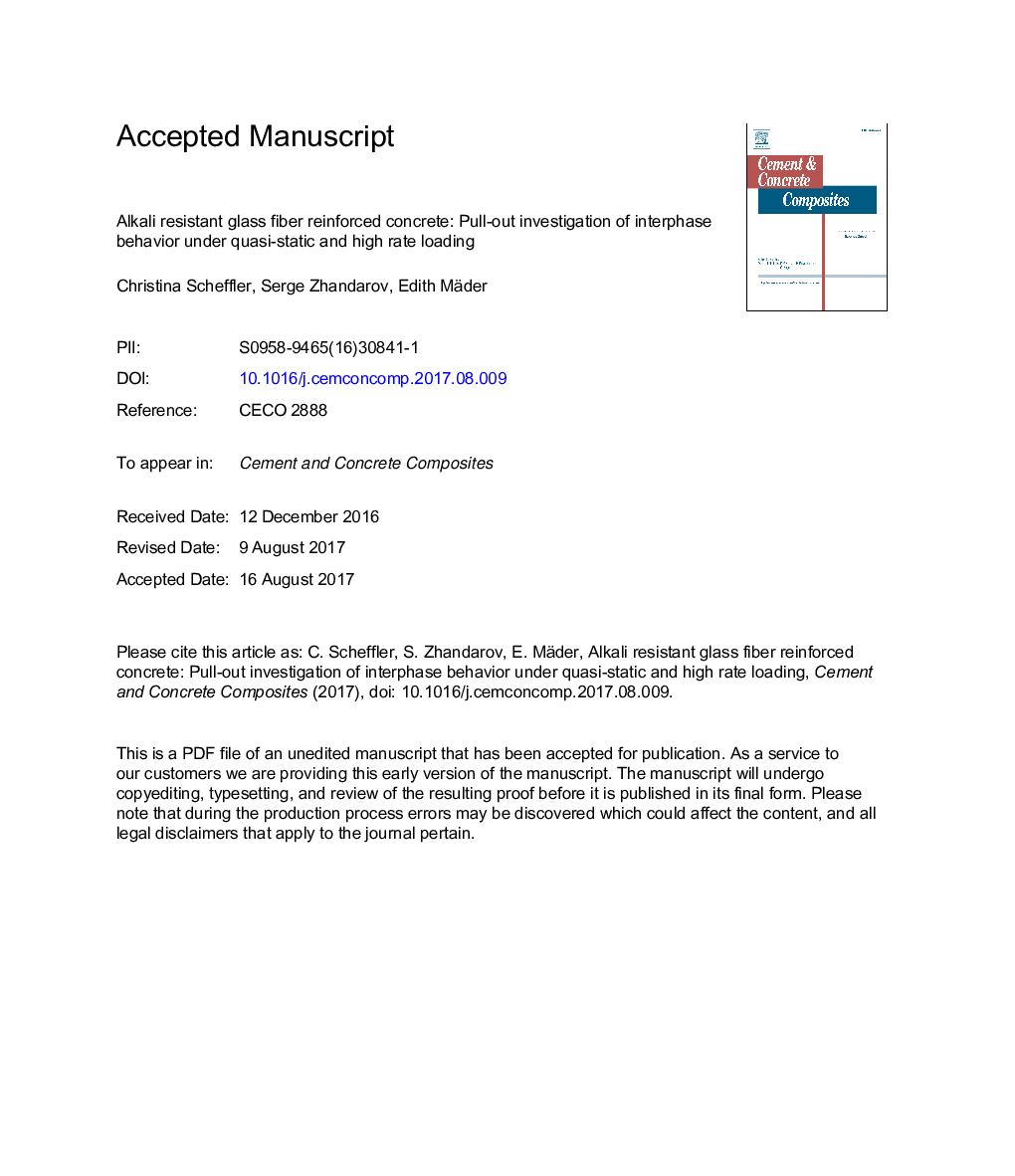| کد مقاله | کد نشریه | سال انتشار | مقاله انگلیسی | نسخه تمام متن |
|---|---|---|---|---|
| 5436746 | 1509649 | 2017 | 23 صفحه PDF | دانلود رایگان |
عنوان انگلیسی مقاله ISI
Alkali resistant glass fiber reinforced concrete: Pull-out investigation of interphase behavior under quasi-static and high rate loading
ترجمه فارسی عنوان
بتن آرمه مقاوم در برابر قلیایی: تحقیق در مورد رفتار بین فاز تحت بارگذاری شبه استاتیک و با سرعت بالا
دانلود مقاله + سفارش ترجمه
دانلود مقاله ISI انگلیسی
رایگان برای ایرانیان
کلمات کلیدی
الیاف شیشه ای، اندازه قدرت میانجی، رفتار ضربه، میکروسکوپ نیروی اتمی،
موضوعات مرتبط
مهندسی و علوم پایه
سایر رشته های مهندسی
مهندسی صنعتی و تولید
چکیده انگلیسی
Single fiber model composites of alkali resistant (AR-) glass fibers and a cementitious matrix were used to investigate the pull-out behavior under quasi-static and high speed loading. For fundamental understanding of the effect of the fiber/matrix interphase on the pull-out behavior under impact, differently sized AR-glass fibers were spun. As a first approach, the fiber surface was modified in oppositional ways using the following sizings: one based on a polypropylene (PP, weak) film former and another one based on a styrene-butadiene (strong) film former. Additionally, some of the fibers were kept unsized for comparison. A new 'alternative' approach was employed to determine the local interfacial shear strength, Ïd, and the critical energy release rate, Gic, from the reliable force values of the force-displacement curves. For all fiber surface states, the Ïd and Gic values for high loading rates appeared to be considerably greater than the corresponding parameters for a quasi-static pull-out test. This can be explained using a model based on Zhurkov's kinetic (thermal fluctuation) theory of the strength of solids, which also enabled to estimate the apparent activation energy for interfacial debonding. Both quasi-static and high-rate pull-out tests on this fiber/matrix pair can be considered as 'normal' (slip-dependent interfacial friction was not observed) and their results can be evaluated using the described approaches. The interfacial frictional stress reduced at high-rate pull-out tests for all systems. One of the possible mechanisms responsible for this behavior may be the smoothing of surface asperities upon debonding. As revealed by AFM of fracture surfaces, in the case of unsized fibers or those with the 'strong' styrene-butadiene sizing, the interfacial crack occurs through surface layers of the matrix material adjacent to the fiber, but it may propagate through the weak interface when the fiber is sized with 'weak' PP film former.
ناشر
Database: Elsevier - ScienceDirect (ساینس دایرکت)
Journal: Cement and Concrete Composites - Volume 84, November 2017, Pages 19-27
Journal: Cement and Concrete Composites - Volume 84, November 2017, Pages 19-27
نویسندگان
Christina Scheffler, Serge Zhandarov, Edith Mäder,
